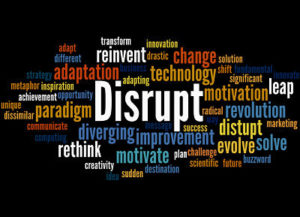Shhh, we’re secret shopping
January 11, 2017
 If there’s one marketing tactic that we execute for clients that always yields incredible results, it’s when we secret shop their operation. Without exception, a secret shopping program will:
If there’s one marketing tactic that we execute for clients that always yields incredible results, it’s when we secret shop their operation. Without exception, a secret shopping program will:
- Provide insights that surprise you (good and bad)
- Spotlight specific areas where your training and communication have failed and you/your employees are hurting your brand
- Uncover sales opportunities that you are letting slip through your fingers
- Identify employees who are brand ambassadors and those who are actually doing damage to your reputation
We secret shop some of our clients every year and even though we’ve done it before – each time produces new insights and results. We always modify some aspects of their customer interaction, marketing, and employee training based on the results of the effort.
Many times we not only secret shop our own clients but we include their competitors as well. This produces an incredible wealth of new knowledge – from vulnerabilities to what they’re saying about their competition (you!) to prospects. Depending on the study – sometimes we don’t tell our operatives who the client is but at the end of the process, we ask them who they would hire/buy from. That’s always an eye opener!
If you’re a B2B leader/owner and are about to dismiss this as a retail marketing tactic – think again. We’ve done it for plenty of B2B clients with the exact same results. No matter what you sell – you interact with people to market and sell your offerings. We’ve done secret shopping on the web, over the phone, via email and in person (usually a blend of more than one throughout the sales cycle) and the learning is huge, no matter what you sell.
Like all marketing – doing it and doing it well are two different things. There are some elements of a secret shopping program that you’ll want to pay special attention to if you want reliable results.
This is not a DIY project: There are some marketing elements that you and your team are perfectly equipped to do on your own. This is not one of them. You need to bring in experienced outsiders who understand your industry but more important – understand how to effectively secret shop and report back the results.
You want to choose a firm who has professionals that are experienced in handling the entire secret shopping experience from initial contact to the final report. They need to be privy to your key messages, brand and sales process or they won’t be able to help you identify how to improve.
Create a safe environment: Secret shoppers often have to share less than ideal results with their clients. If you don’t make it perfectly clear that you’re ready to hear whatever they discover – it may make it difficult for them to be as candid as you need them to be. Prepare yourself – no matter how good you and your employees are – you’re not going to get a perfect grade. There’s always room for improvement.
Consistency is key: For the results to be meaningful, the experience needs to be consistent – all the shoppers need to look for the same things, ask the same sorts of questions, and grade the experience based on the same criteria. This allows you to know that the reported results aren’t an anomaly and should be reacted to – good or bad.
Next steps: The most important part of the secret shopping experience is that the company you hire can help you identify next steps to correct the issues and accentuate the positives. This will probably include employee training, some tweaks to your sales process and it may even include some changes to your product/service itself.
If you want to start your year off with a serious boost – consider a secret shopping program.
More

